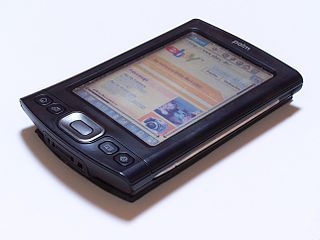 W
WA personal digital assistant (PDA), also known as a handheld PC, is a variety mobile device which functions as a personal information manager. PDAs have been mostly displaced by the widespread adoption of highly capable smartphones, in particular those based on iOS and Android.
 W
WThe Agenda VR3 was the name of the first "pure Linux" Personal Digital Assistant (PDA), released in May 2001 by Agenda Computing, Inc. of Irvine, California. The Linux Documentation Project considers the VR3 to be a "true Linux PDA" because the manufacturers installed Linux-based operating systems on them by default.
 W
WThe Amstrad E-mailer is a Personal Communication Centre that is a landline phone device, launched in March 2000.
 W
WThe Archos PMA400 is a personal digital assistant (PDA) from Archos, with a hard disk drive and audio and video playback and recording capabilities, so it also functions as a portable media player (PMP). The PMA400 was the most expensive within the line of products that they supplied.
 W
WThe Atari Portfolio is an IBM PC-compatible palmtop PC, released by Atari Corporation in June 1989. This makes it the world's first palmtop computer.
 W
WThe Atari Portfolio is an IBM PC-compatible palmtop PC, released by Atari Corporation in June 1989. This makes it the world's first palmtop computer.
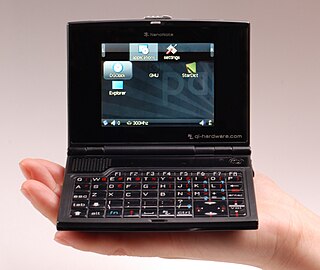 W
WThe Ben NanoNote is a pocket computer using the Linux-based OpenWrt operating system. An open-source hardware device developed by Qi Hardware, it has been called possibly "the world's smallest Linux laptop for the traditional definition of the word.". In addition, the Ben NanoNote is noteworthy for being one of the few devices on the market running entirely on copyleft hardware.
 W
WBlackBerry is a line of smartphones, tablets, and services originally designed and marketed by Canadian company BlackBerry Limited. BlackBerry products were formerly designed, manufactured, and marketed by Chinese company TCL Communication, Indonesian company BB Merah Putih, and Indian company Optiemus Infracom for the global, Indonesian, and South Asian markets (respectively) using the BlackBerry brand under license. TCL stopped manufacturing the devices on August 31, 2020, as its contract expired, with the last Blackberry-TCL phone being the Blackberry Key2LE.
 W
WBlackBerry Torch is a series of smartphones manufactured by BlackBerry Ltd. The lineup consists of the following:BlackBerry Torch 9800, the first phone in the series, powered by BlackBerry OS 6. BlackBerry Torch 9810, which physically mimics the 9800, but with improved internal hardware and BlackBerry OS 7. BlackBerry Torch 9850/9860, featuring a larger touch screen, no keyboard, and BlackBerry OS 7.
 W
WThe BlackBerry Torch 9800 is a 2010 model in the BlackBerry line of smartphones. It combines a physical QWERTY keyboard with a sliding multi-touch screen display and runs on BlackBerry OS 6. Introduced on August 3, 2010, the phone became available exclusively on AT&T on August 12, 2010.
 W
WBlackBerry 950 is an early BlackBerry model, introduced in 1998 by Canadian smartphone manufacturer Research in Motion. There were two editions, the Exchange Edition and the Internet Edition, both identical in hardware and differing only in the provided software; the Exchange Edition could connect to corporate email mailboxes running on Microsoft Exchange, while the Internet Edition could access general internet mailboxes only.
 W
WCasio Cassiopeia was the brand name of a PDA manufactured by Casio. It used Windows CE as the Operating system. Casio was one of the first manufacturers of PDAs, developing at the beginning small pocket-sized computers with keyboards and grayscale displays and subsequently moving to smaller units in response to customer demand.
 W
WThe Cybiko is a Russian handheld computer introduced in the U.S. by David Yang's company Cybiko Inc. as a retail test market in New York on April 2000, and rolled out nationwide in May 2000. It is designed for teens, featuring its own two-way radio text messaging system. It had over 430 "official" freeware games and applications. Because of the text messaging system, it features a rubber QWERTY keyboard. An MP3 player add-on with a SmartMedia card slot was made for the unit as well. The company stopped manufacturing the units after two product versions and only a few years on the market. Cybikos can communicate with each other up to a maximum range of 300 metres. Several Cybikos can chat with each other in a wireless chatroom. By the end of 2000, the Cybiko Classic sold over 500,000 units.
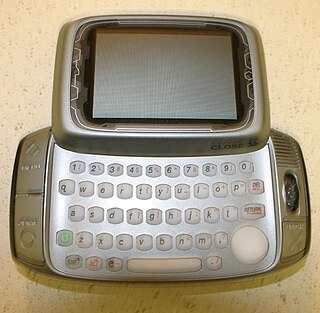 W
WThe Danger Hiptop, also re-branded as the T-Mobile Sidekick, Mobiflip and Sharp Jump is a GPRS/EDGE/UMTS smartphone that was produced by Danger, Inc. from 2002 to 2010.
 W
WThe DragonBox Pyra is an upcoming Linux-based handheld computer equipped with a keyboard and gaming controls. The project entered prototyping stage in 2015. Pre-orders began on 1 May 2016, with a final release date still undefined. As of August 2020, the first production model has been shipped, but only to developers; the software is not yet ready to ship.
 W
WThe EO is an early commercial tablet computer that was created by Eo, Inc., and released in April 1993. Eo was the hardware spin-out of GO. Officially named the AT&T EO Personal Communicator, it was similar to a large personal digital assistant with wireless communications, and competed against the Apple Newton. The unit was produced in conjunction with David Kelley Design, frog design, and the Matsushita, Olivetti and Marubeni corporations.
 W
WThe Fossil Wrist PDA is a smartwatch that runs Palm OS. The newer incarnation, which does not include Palm OS, is called the Fossil WristNet watch.
 W
WThe Franklin eBookMan is a discontinued handheld device made to read ebooks. This gadget, made from 1999 until 2002, has standard PDA functions and can play and record sounds. It has a black on green touchscreen, contains 8 or 16 MB of RAM, and uses its own proprietary operating system. Its handwriting recognition system accepts nearly natural handwriting.
 W
WThe Gemini PDA is a personal digital assistant designed by Planet Computers in association with Martin Riddiford, who previously worked on the Psion Series 5 in the 1990s, and crowdfunded via Indiegogo in 2017. The Gemini bucks the trend of modern smartphones in its screen being primarily used in landscape aspect, and having a keyboard, i.e. taking on the form of a subnotebook.
 W
WThe Helio Ocean was a dual slider Internet-enabled multimedia wireless mobile device sold by mobile virtual network operator (MVNO) wireless carrier Helio, and manufactured by Pantech Curitel. A distinctive design feature of the Ocean was its dual sliding mechanism — when slid down in the vertical position, it revealed a telephone keypad. When slid down in the horizontal position, it revealed a 35-key QWERTY keyboard.
 W
WThe IBM Simon Personal Communicator is a handheld, touchscreen PDA designed by International Business Machines (IBM), and manufactured by Mitsubishi Electric. BellSouth Cellular Corp. distributed the Simon Personal Communicator in the United States between August 1994 and February 1995, selling 50,000 units. The Simon Personal Communicator was the first personal digital assistant or PDA to include telephony features. The battery lasted only an hour, and flip phones became increasingly slim which led to its demise.
 W
WThe LG enV Touch, also known as the Voyager 2 or VX11000, is an internet-enabled, multimedia device created by LG Electronics for use with Verizon Wireless. The phone was released on June 5, 2009 as a successor to the LG Voyager. The phone's external screen is touch enabled with a virtual keyboard and buttons. The internal screen features a QWERTY keyboard and both screens have a WVGA resolution. The phone's functions include a 3.2-megapixel camera with flash, a portable media player, text messaging, e-mail support, a web browser, a built-in accelerometer, and Verizon's GPS navigation software, VZ Navigator. It is a dual-band CDMA phone using EVDO for data communications.
 W
WThe LG VX10000, also known as the Verizon Voyager or LG VX10K, is an Internet-enabled multimedia phone designed by LG Electronics and on the Verizon Wireless network, Telus, and Bell Mobility. The external screen is touch enabled with a virtual keyboard and buttons. It features an internal screen for use with the included full QWERTY keyboard. Both screens of the Voyager have WQVGA resolution. The Voyager's functions include those of a camera phone and a portable media player, in addition to text messaging, and Internet services including e-mail and web browsing. It is a dual-band mobile phone that uses the CDMA standard. It supports the EVDO data technology.
 W
WThe LifeDrive was a Palm OS-based handheld personal digital assistant device that was produced by PalmOne, a former incarnation of Palm, Inc. The device was PalmOne's first and only foray into the "Mobile Manager" device category. As its name suggests, Palm intended the LifeDrive to be capable of providing all the capabilities and data storage space that a user could possibly need during the course of the day, including contacts, calendar, music, images, video, and applications. At the time of release, the 4-gigabyte capacity that was chosen for this task could not be achieved using the flash memory used by most PDAs, while keeping the cost of the device low enough for consumer purchase. For this reason, a 4 GB microdrive hard disk drive was selected for the task. It featured a separate data partition that could be used as a portable disk drive. The LifeDrive featured Bluetooth and Wi-Fi connectivity, the first Palm handheld to feature both. The device came pre-loaded with eReader, Documents To Go, and WiFile software.
 W
WThe Magic Link was a personal communicator and PDA marketed by Sony from 1994, based on the General Magic's Magic Cap operating system. The Magic Link was brought to market by Jerry Fiala Sr at Sony. The "Link" part of the name refers to the device's ability to send and receive data over a modem.
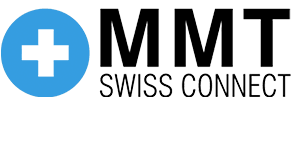 W
WManufacture Modules Technologies Sarl (MMT) is a Swiss company established in Geneva in 2015 which originally specialised in the development and commercialization of "Horological Smartwatch modules", firmware, apps and cloud. Located at Geneva's Skylab high-tech hub, it expanded into the development and manufacturing of "E-Straps" operated with a mobile application.
 W
WA mobile device is a computer small enough to hold and operate in the hand. Typically, any handheld computer device will have an LCD or OLED flatscreen interface, providing a touchscreen interface with digital buttons and keyboard or physical buttons along with a physical keyboard. Many such devices can connect to the Internet and interconnect with other devices such as car entertainment systems or headsets via Wi-Fi, Bluetooth, cellular networks or near field communication (NFC). Integrated cameras, the ability to place and receive voice and video telephone calls, video games, and Global Positioning System (GPS) capabilities are common. Power is typically provided by a lithium battery. Mobile devices may run mobile operating systems that allow third-party apps specialized for said capabilities to be installed and run.
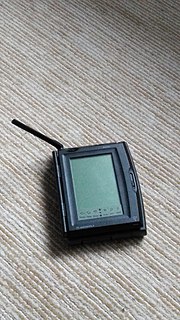 W
WThe Motorola Marco was a Newton OS-based personal digital assistant from Motorola, launched in January 1995 at MacWorld. It was unique in that it included a compatible RadioMail and ARDIS network radio antenna, which allowed users to check and send e-mail, as well as receive and send text messages.
 W
WThe Nokia 5230 (also known as the Nokia 5230 Nuron) is a smartphone manufactured by Nokia, running Symbian OS v9.4, S60 5th Edition. It was released in November 2009 after being announced in August of the same year.
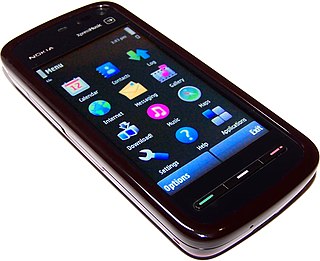 W
WNokia 5800 XpressMusic is a mid-range smartphone part of the XpressMusic line, announced by Nokia on 2 October 2008 in London and started shipping in November of that year. Code-named "Tube", it was the first touchscreen-equipped S60 device by Nokia - essentially it was the first device to run Symbian^1, also known as S60 5th Edition, the touch-specific S60-based platform created by the Symbian Foundation. The touchscreen features tactile feedback.
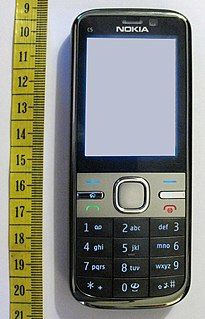 W
WThe Nokia C5-00 is the first in the new Cseries of Nokia phones, announced March 2010. The C5-00 is a smartphone with messaging and social networking features, including, for example, Facebook and Flickr applications. The C5-00 allows multitasking and has a 2.2-inch (56 mm) display and a 3.2-megapixel camera. It also includes GPS and a free navigation courtesy of Ovi Maps. It runs on Symbian OS with S60 3rd Edition Feature Pack 2.
 W
WThe Nokia C5-03 is a budget resistive touchscreen smartphone with WLAN from the Cseries that was released in December 2010. The phone has Shazam music identification software and social networking software included or available for download.
 W
WThe Nokia E75 is a smartphone from the Eseries range with a side sliding QWERTY keyboard and also front keypad.
 W
WThe Nokia Morph is a concept mobile phone created by Finnish company Nokia. The concept, which was unveiled on February 25, 2008 at The Museum of Modern Art in New York City, was the product of a joint study into the future of mobile phones by the Nokia Research Center and the University of Cambridge's Nanoscience Centre. The device was presented as part of the museum's "Design and The Elastic Mind" exhibit. According to Bob Iannucci, Nokia's chief technology officer, the "Nokia Research Center is looking at ways to reinvent the form and function of mobile devices... The Morph concept shows what might be possible."
 W
WOsaris is a personal digital assistant (PDA) featuring the EPOC operating system distributed by Oregon Scientific.
 W
WPalm OS is a discontinued mobile operating system initially developed by Palm, Inc., for personal digital assistants (PDAs) in 1996. Palm OS was designed for ease of use with a touchscreen-based graphical user interface. It is provided with a suite of basic applications for personal information management. Later versions of the OS have been extended to support smartphones. Several other licensees have manufactured devices powered by Palm OS.
 W
WThe Pandora is a handheld game console and mobile personal computer originally released in 2010. It is designed to take advantage of existing free and open-source software and to be a target for homebrew development. It includes several features that no handheld game consoles have previously had, making it a cross between a handheld game console and a subnotebook. It is developed and produced by OpenPandora, which is made up of former distributors and community members of the GP32 and GP2X handhelds. Until 2013 multiple batches of slightly updated Pandora variants were produced. In 2014 the development of a redesigned and upgraded successor, called DragonBox Pyra, was started.
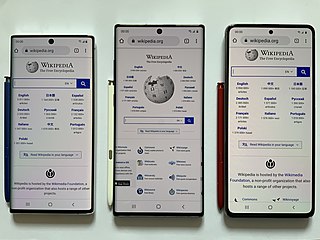 W
WThe phablet is a class of modern mobile devices combining or straddling the size format of smartphones and tablets. The word itself is a portmanteau of the words phone and tablet.
 W
WPocket LOOX was a series of Pocket PC-based personal digital assistants (PDAs) and navigation systems developed by Fujitsu Siemens. It was discontinued in 2007.
 W
WPocket Viewer was a model range of personal digital assistants (PDAs) developed by Casio around the turn of the 21st Century.
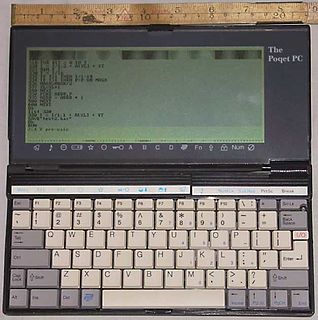 W
WThe Poqet PC is a very small, portable IBM PC compatible computer, introduced in 1989 by Poqet Computer Corporation with a price of $2000. The computer was discontinued after Fujitsu Ltd. bought Poqet Computer Corp. It was the first subnotebook form factor IBM PC compatible computer that ran MS-DOS. The Poqet PC is powered by two AA-size batteries. Through the use of aggressive power management, which includes stopping the CPU between keystrokes, the batteries are able to power the computer for anywhere between a couple of weeks and a couple of months, depending on usage. The computer also uses an "instant on" feature, such that after powering it down, it can be used again immediately without having to go through a full booting sequence. The Poqet PC is comparable to the HP 95LX/HP 100LX/HP 200LX and the Atari Portfolio handheld computers.
 W
WThe Poqet PC is a very small, portable IBM PC compatible computer, introduced in 1989 by Poqet Computer Corporation with a price of $2000. The computer was discontinued after Fujitsu Ltd. bought Poqet Computer Corp. It was the first subnotebook form factor IBM PC compatible computer that ran MS-DOS. The Poqet PC is powered by two AA-size batteries. Through the use of aggressive power management, which includes stopping the CPU between keystrokes, the batteries are able to power the computer for anywhere between a couple of weeks and a couple of months, depending on usage. The computer also uses an "instant on" feature, such that after powering it down, it can be used again immediately without having to go through a full booting sequence. The Poqet PC is comparable to the HP 95LX/HP 100LX/HP 200LX and the Atari Portfolio handheld computers.
 W
WThe Poqet PC is a very small, portable IBM PC compatible computer, introduced in 1989 by Poqet Computer Corporation with a price of $2000. The computer was discontinued after Fujitsu Ltd. bought Poqet Computer Corp. It was the first subnotebook form factor IBM PC compatible computer that ran MS-DOS. The Poqet PC is powered by two AA-size batteries. Through the use of aggressive power management, which includes stopping the CPU between keystrokes, the batteries are able to power the computer for anywhere between a couple of weeks and a couple of months, depending on usage. The computer also uses an "instant on" feature, such that after powering it down, it can be used again immediately without having to go through a full booting sequence. The Poqet PC is comparable to the HP 95LX/HP 100LX/HP 200LX and the Atari Portfolio handheld computers.
 W
WThe Poqet PC is a very small, portable IBM PC compatible computer, introduced in 1989 by Poqet Computer Corporation with a price of $2000. The computer was discontinued after Fujitsu Ltd. bought Poqet Computer Corp. It was the first subnotebook form factor IBM PC compatible computer that ran MS-DOS. The Poqet PC is powered by two AA-size batteries. Through the use of aggressive power management, which includes stopping the CPU between keystrokes, the batteries are able to power the computer for anywhere between a couple of weeks and a couple of months, depending on usage. The computer also uses an "instant on" feature, such that after powering it down, it can be used again immediately without having to go through a full booting sequence. The Poqet PC is comparable to the HP 95LX/HP 100LX/HP 200LX and the Atari Portfolio handheld computers.
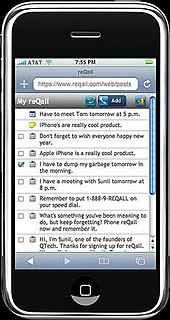 W
WreQall debuted in 2007 as an app that intelligently organized your spoken voice notes winning a DEMOgod award. Their first app was a voice-enabled personal productivity software program that integrates phone, email, text messaging and IM into a mobile memory aid. The software was available as a web-based application or as a download for the Apple iPhone, Android or the RIM BlackBerry smartphone. It was available in free and paid versions.
 W
WThe Franklin REX 5, was one of the Rex line of Personal Digital Assistants, each a PCMCIA PC card and thus the size of a credit card, built around a Toshiba microprocessor emulating a Zilog Z80. The REX firmware was written by Starfish Software, and the hardware was manufactured by Citizen Electronics. Earlier models in this line had almost no input possibilities except to download data when installed in a host computer or in a docking station; the Rex 5 added a sixth button and introduced a modal input method. Further, with 512 KB of RAM, the Rex 5 had twice the memory of the Rex-3.
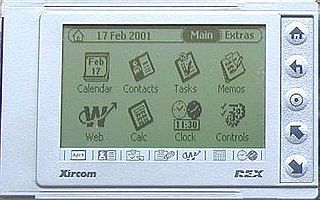 W
WThe REX 6000 is an ultra-thin Personal Digital Assistant (PDA) produced by Xircom, and later Intel, from about 2000 to 2001. Its primary claim to fame is as "The world's smallest full-function PDA", due to its unusual physical configuration as a PC card Type-II card. The REX may be synchronized by inserting it in a host PC's PCMCIA/PC-card slot. Docking stations were manufactured for connection to hosts without PC card Type-II slots, which allows the REX to be connected via a USB or serial connection.
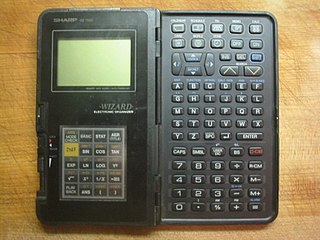 W
WThe Sharp Wizard is a series of electronic organizers released by Sharp Corporation. The first model was the OZ-7000 released in 1989, making it one of the first electronic organizers to be sold. The name OZ-7000 was used for the USA market, while in Europe the device was known as the IQ-7000.
 W
WThe Sharp Zaurus is the name of a series of personal digital assistants (PDAs) made by Sharp Corporation. The Zaurus was the most popular PDA during the 1990s in Japan and was based on a proprietary operating system. The first Sharp PDA to use the Linux operating system was the SL-5000D, running the Qtopia-based Embedix Plus. The Linux Documentation Project considers the Zaurus series to be "true Linux PDAs" because their manufacturers install Linux-based operating systems on them by default. The name derives from the common suffix applied to the names of dinosaurs.
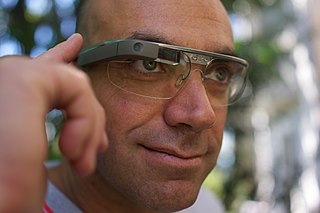 W
WSmartglasses or smart glasses are wearable computer glasses that add information alongside or to what the wearer sees. Alternatively, smartglasses are sometimes defined as wearable computer glasses that are able to change their optical properties at runtime. Smart sunglasses which are programmed to change tint by electronic means are an example of the latter type of smartglasses.
 W
WA smartwatch is a wearable computer in the form of a watch; modern smartwatches provide a local touchscreen interface for daily use, while an associated smartphone app provides for management and telemetry. While early models could perform basic tasks, such as calculations, digital time telling, translations, and game-playing, 2010s smartwatches have more general functionality closer to smartphones, including mobile apps, a mobile operating system and WiFi/Bluetooth connectivity. Some smartwatches function as portable media players, with FM radio and playback of digital audio and video files via a Bluetooth headset. Some models, called 'watch phones', have mobile cellular functionality like making calls.
 W
WTimex Datalink or Timex Data Link is a line of early smartwatches manufactured by Timex and is considered a wristwatch computer. It is the first watch capable of downloading information wirelessly from a computer. As the name implies, datalink watches are capable of data transfer through linking with a computer. The Datalink line was introduced in 1994 and it was co-developed with Microsoft as a wearable alternative to mainstream PDAs with additional attributes such as water resistance, that PDAs lacked, and easy programmability. The watch was demonstrated by Bill Gates on 21 June 1994 in a presentation where he downloaded information from a computer monitor using bars of light and then showed to the audience the downloaded appointments and other data. The early models included models 50, 70, 150 and model 150s. The model numbers indicated the approximate number of phone numbers that could be stored in the watch memory. These early models were, at the time of their introduction, the only watches to bear the Microsoft logo. The watches have been certified by NASA for space travel and have been used by astronauts and cosmonauts in space missions. There had been an evolution over the years as to the number and type of entries that can be stored in the various watch models as well as the mode of data transfer between computer and watch. At the time of its introduction the watch was considered high-tech.
 W
WA wearable computer, also known as a wearable or body-borne computer, is a computing device worn on the body.
 W
WThe Yopy was the name of a series of Personal Digital Assistants (PDA) made by GMate Corporation, also used as a popular PDA Phone in Korea and based on the Linux operating system. The Linux Documentation Project considers the Yopy series to be "true Linux PDAs" because their manufacturers install Linux-based operating systems on them by default.